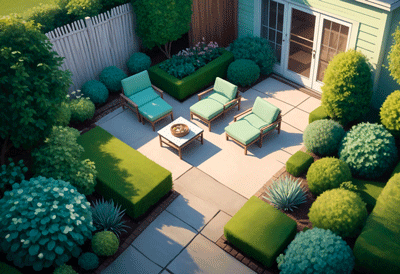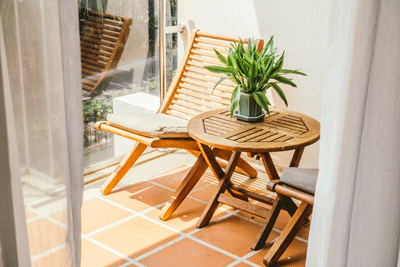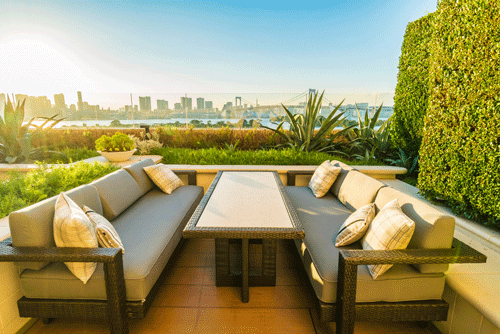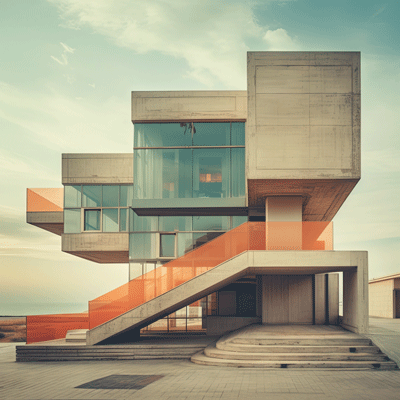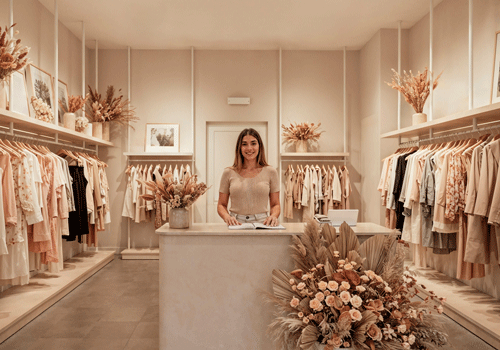
Interior & Exterior Design
Salons & Barbershops
Essential Tips for Designing a Stylish and Functional Salon & Barbershop
The design of your salon or barbershop is a powerful marketing tool. It sets the mood, builds trust, and can be the key differentiator in a competitive market. A great design balances aesthetics, workflow, and client comfort.
1. Master the Layout and Workflow (The “Behind the Chair” Logic)
Efficiency is profitability. A logical layout ensures a smooth flow for both clients and staff.
Create Distinct Zones:
Reception & Waiting Area: The first impression. It should be inviting and organized.
Styling/Barbering Stations: The main performance area.
Wash Area: Should feel like a tranquil retreat.
Color Bar/Processing Area: Needs accessible storage and comfortable seating.
Retail Area: Strategically placed near the exit.
Optimize the Traffic Flow: Ensure there’s a clear, unobstructed path for clients moving from reception -> shampoo -> styling chair -> checkout. Staff should be able to move easily between stations and supply areas without crossing client paths constantly.
Station Spacing: Leave adequate space between chairs (at least 4-5 feet / 120-150 cm) for privacy, comfort, and to allow stylists to work without bumping into each other.
2. Develop a Strong Brand Identity
Your interior design should be a physical extension of your brand.
Define Your Vibe: Are you a luxury spa-like salon, a vintage-inspired barbershop, a sleek, modern unisex space, or an edgy, urban studio? Every design choice should reflect this.
Consistent Color Palette: Choose a palette that reflects your brand’s personality. Neutral tones (grey, white, beige) feel clean and high-end. Bold colors or dark tones (navy, black, emerald green) can create a dramatic, masculine, or luxurious feel.
Cohesive Materials: Stick to 2-3 key materials. For example: exposed brick and black metal for an industrial look; light wood and marble for a Scandinavian feel; rich leather and dark wood for a classic barbershop.
3. Invest in Professional Lighting
Lighting is arguably the most important element. It affects both the service quality and the ambiance.
Task Lighting at Stations: This is non-negotiable. Use high-quality, color-corrected LED lights around mirrors (on the sides is best) to ensure stylists and barbers see true color and detail without casting shadows on the client’s face.
Ambient Lighting: Provides the overall mood of the space. Use dimmers, pendant lights, or track lighting to create a warm and welcoming atmosphere. Avoid harsh, cool-toned overhead lights.
Accent Lighting: Use to highlight retail displays, architectural features, or artwork. LED strip lighting under shelves or behind mirrors adds a modern touch.
4. Create a Memorable Client Experience at Every Touchpoint
The design should make clients feel comfortable, pampered, and valued.
The Reception Desk: This is your command center. It should be clean, organized, and make a strong brand statement. It’s also the last point of contact for payment and rebooking.
Comfortable and Stylish Seating: Invest in comfortable, supportive styling chairs and barber chairs. In the waiting area, choose durable yet stylish seating that fits your theme.
The Wash Area Experience: This is a key moment of relaxation.
Invest in comfortable shampoo chairs with proper neck support.
Create a soothing sensory experience with dimmable lights, calming sounds (or soundproofing), and pleasant aromas.
Thoughtful Amenities: Offer secure storage for personal belongings (locked cabinets or baskets), high-quality refreshments, and accessible charging ports.
5. Prioritize Functionality and Storage
A cluttered space looks unprofessional and hinders efficiency.
Ample and Smart Storage: Every station needs dedicated storage for tools and products. Use rolling carts, drawer units, and wall-mounted organizers to keep counters clear.
Pro Tip: Use “closed storage” (cabinets, drawers) for clutter and “open storage” (shelves, rails) for stylishly displayed, frequently used items.
Utility Considerations: Ensure easy access to plumbing and electrical outlets. Plan for proper ventilation to remove chemical fumes and excess humidity.
6. Incorporate Key Design Elements for Style
The Mirrors: Mirrors are both functional and decorative. Large, well-lit mirrors are essential. Consider unique shapes or frames that match your brand’s style.
The Flooring: Choose a flooring material that is durable, easy to clean, and slip-resistant. Polished concrete, luxury vinyl tile (LVT), and epoxy flooring are excellent, stylish choices that can withstand traffic, water, and chemicals.
The Retail Display: Your retail area should be clean, well-lit, and easy to browse. It’s not just storage; it’s a silent salesperson. Place it near the exit where clients can impulsively pick up a product on their way out.
Salon vs. Barbershop: Nuances to Consider
| Feature | Salon (Typically) | Barbershop (Typically) |
|---|---|---|
| Ambiance | Softer, calmer, spa-like. | More social, energetic, “masculine” or vintage. |
| Waiting Area | Often feels like a boutique lounge. | Can feel like a clubby lounge; may have a pool table, vintage posters. |
| Key Feature | Shampoo Area is a major focus. | The Barber Chair itself is the iconic centerpiece. |
| Decor | More feminine, floral, or minimalist. | Often uses dark wood, leather, metal, and checkerboard patterns. |
Common Design Mistakes to Avoid
Poor Ventilation: The space will smell strongly of chemicals, which is unpleasant for clients and unhealthy for staff.
Insufficient Lighting: Stylists can’t do their best work, and color results can be inaccurate.
Neglecting the Back of House: A chaotic, uncomfortable break room for staff leads to low morale. Your team needs a clean, organized, and relaxing space to recharge.
Prioritizing Form Over Function: A beautiful station is useless if it doesn’t have enough power outlets or storage for essential tools.
Ignoring Acoustics: A noisy, echoey space is stressful. Use rugs, curtains, and acoustic panels to soften sound.
In summary, a successful salon or barbershop design tells a story, empowers the stylists/barbers to do their best work, and makes the client feel confident and cared for from the moment they walk in until the moment they leave.


